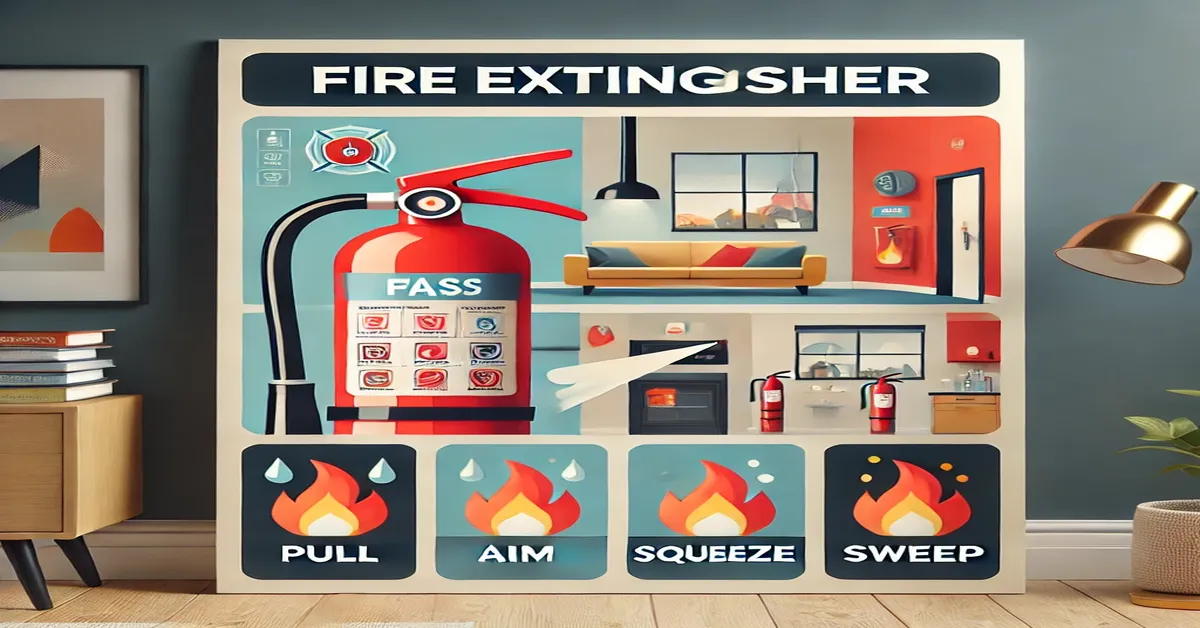Everybody knows extinguishers are an essential part of fire safety, along with some kind of fire detection system, like wireless fire alarms. But what we often fail to consider is that they don’t work on their own. We need to know how to use them, unlike the alarms. Otherwise, they’re just as useful as any random object. So, let’s break down everything you need to know about fire extinguishers, including how to choose one, where to place it, and, most importantly, how to use it.
What is an Extinguisher?
Before we get into the nitty-gritty, let’s quickly define what a fire extinguisher is. It’s a portable device filled with fire-fighting agents that can be used to put out small fires before they escalate. Think of it as your fire-fighting sidekick, always ready to spring into action when things heat up.
Types
Not all fires are created equal, and neither are fire extinguishers. You should know a thing or two about the types of fire extinguishers. Each of them is designed for specific classes of fire. Here’s a quick rundown:
- Class A: These extinguishers are for ordinary combustibles like wood, paper, and cloth. Look for them in homes and offices.
- Class B: If you’re dealing with flammable liquids such as gasoline, oil, or grease, you’ll want a Class B extinguisher. They’re commonly found in kitchens and garages.
- Class C: This type is meant for electrical fires. If you have a fire involving wiring, appliances, or circuit boards, grab a Class C extinguisher.
- Class D: These extinguishers are specialized for metal fires, often found in industrial settings. They’re not typically needed in residential spaces.
- Class K: Specifically for cooking oils and fats, Class K extinguishers are essential in commercial kitchens where deep fryers are used.
When choosing a fire extinguisher, look for a multi-purpose model that can handle several classes of fires – usually marked as ABC.
Where to Place Them
Having a fire extinguisher is great, but knowing where to put it is just as important. Here are some tips on strategic placement:
- In the Kitchen: This is a prime area for potential fires, so keep an extinguisher handy. Place it near the exit, but not too close to the stove.
- In Every Level of Your Home: It’s a good idea to have at least one fire extinguisher on each floor, especially in common areas like hallways and living rooms.
- In the Garage: Since garages often contain flammable materials, having an extinguisher nearby is a smart choice.
- Away from Heat Sources: Don’t place your extinguisher too close to potential fire sources. Keep it visible and easily accessible.
How to Use Them
So, you have your fire extinguisher, but do you know how to use it? Here’s a simple guide to the PASS method:
- Pull the Pin: Start by pulling the pin at the top of the extinguisher. This will break the tamper seal.
- Aim Low: Point the nozzle at the base of the fire, not the flames. You want to extinguish the fuel, not just the fire itself.
- Squeeze the Handle: Firmly squeeze the handle to release the extinguishing agent. Be cautious—this can release the contents quickly!
- Sweep from Side to Side: Move the nozzle from side to side while aiming at the base of the fire. Keep doing this until the fire is completely out.
When to Call for Help
While fire extinguishers can be incredibly effective, it’s essential to know when to get out and call for help. If the fire is too large, spreading rapidly, or if you’re feeling overwhelmed, evacuate immediately. Your safety is the most important thing, so don’t hesitate to call 911.
Regular Maintenance is Key
Just like any other safety device, fire extinguishers need regular maintenance to function properly. Here are some tips:
- Check the Pressure Gauge: Make sure the needle is in the green zone, indicating it’s fully charged.
- Inspect for Damage: Look for any dents, rust, or leaks. If you notice any issues, replace the extinguisher.
- Fire Extinguisher Servicing: It’s a good idea to have a professional inspect your extinguishers annually.
Safe and Sound
Hopefully, this simple guide helps you better understand the different types of extinguisher as well as when and how to use them. This information can save your life!







